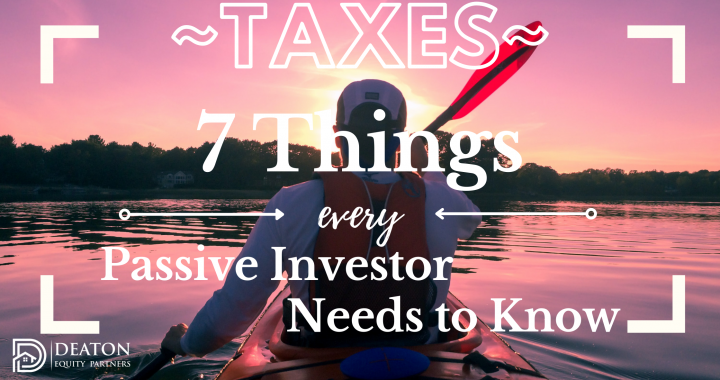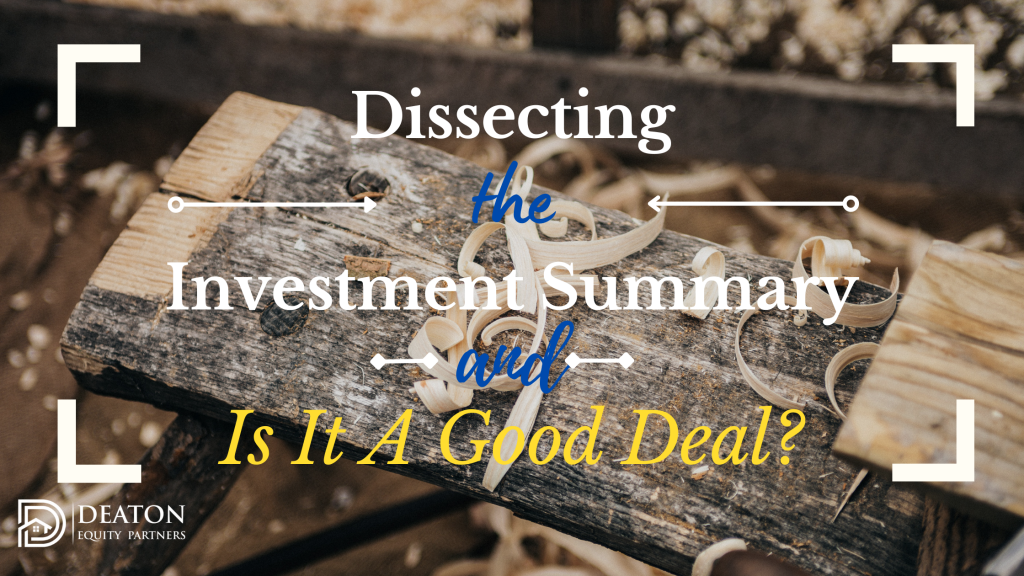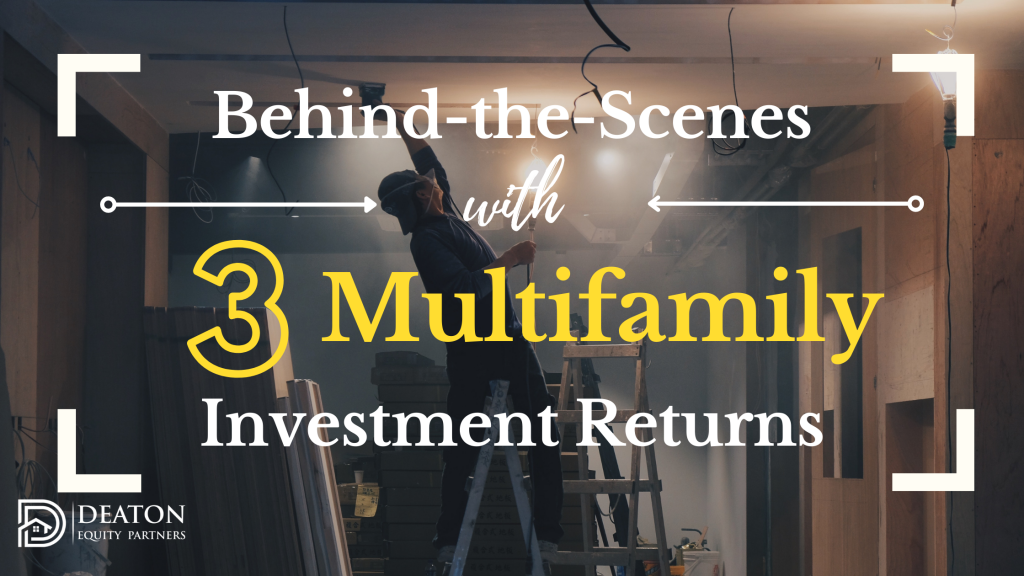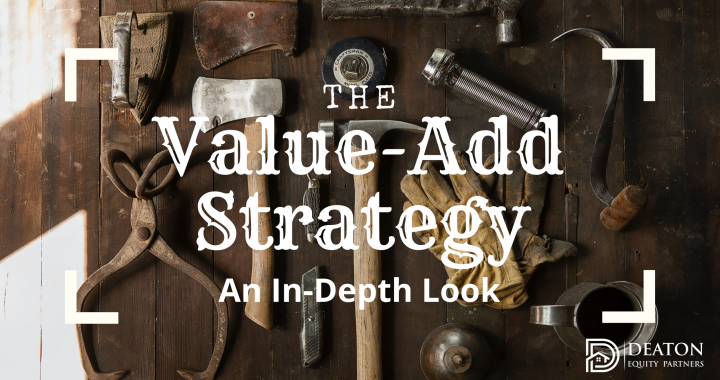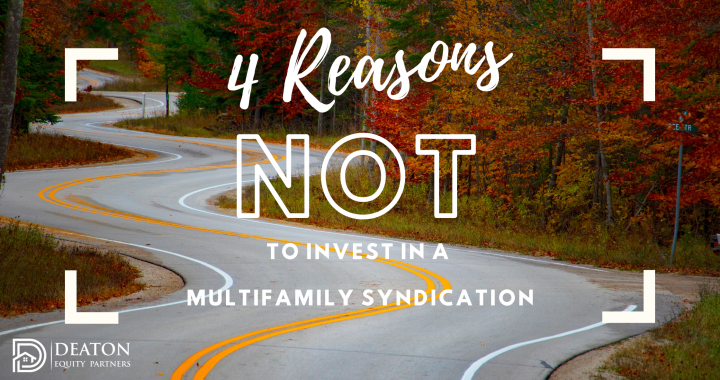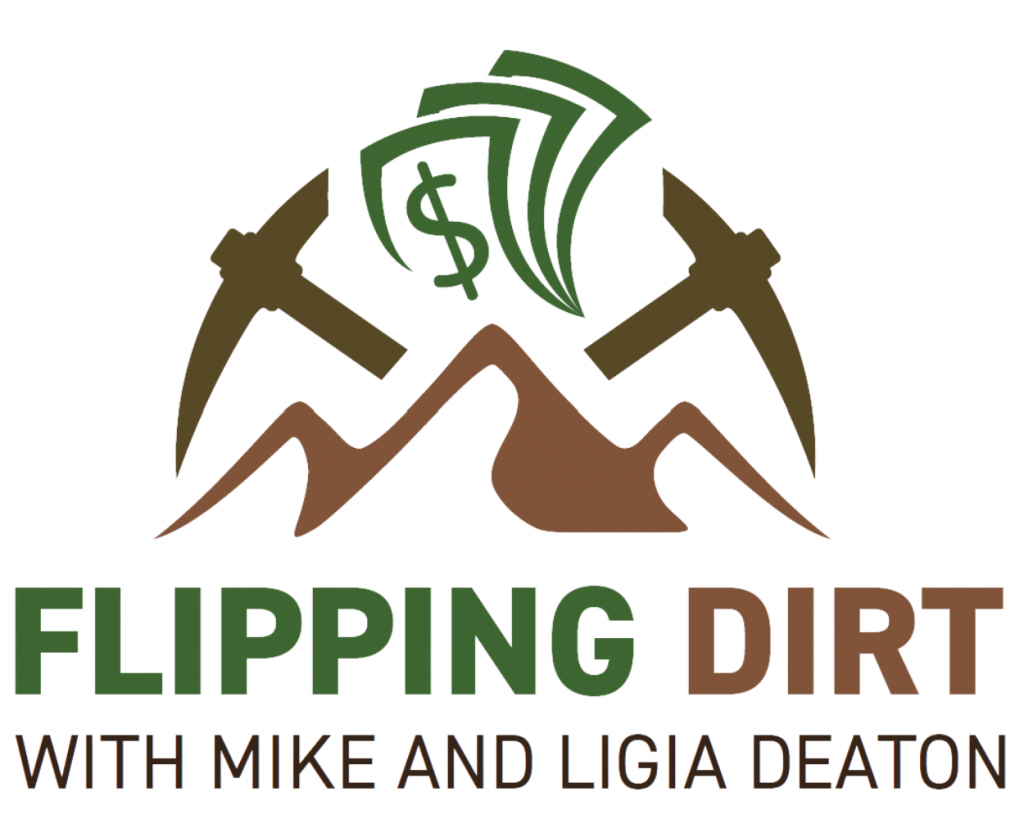So you’ve been devouring all the information possible and have become enamored with the power of passively investing in real estate syndications. How could you not?!
The ability to invest in real, physical assets without the hassle of being a landlord, getting a share of the majority returns, and reaping amazing tax benefits is pretty irresistible. Plus, the diversification opportunities with minimal legwork while making an impact on local communities just about seals the deal.
Even though these traits seem impossible to pass up, real estate syndications aren’t for everyone. Each investor is in a different stage of life, has a different level of risk tolerance, and maintains different goals.
Before investing in a real estate syndication, see if one or more of the below describes you and your current situation.
#1 You Have More Than $50K of “Play” Money
While there are some real estate investment platforms that will accept smaller investment amounts, most private real estate syndications begin at a minimum investment of $50,000.
You want to make sure you have the minimum investment of $50,000, plus your standard emergency fund, plus any other savings for your life’s aspirations. Think about it – a new car, fluffy retirement savings, this year’s vacation to Cabo, and college education funds, to list a few.
Of course, there are lots of contingencies in place in syndications, but they are an investment and as such, come with risks. And just as with any investment, if you aren’t prepared to lose your investment in its entirety and be okay financially, then syndications may not be your jam…yet. You may want to head back to the drawing board with some serious savings plans and re-visit real estate syndications down the road once you have any key needs covered..
On the other hand, if you have your potential cash-needing scenarios covered with savings, by all means, invest with confidence!
#2 You’re Okay Having Someone Else Take the Reins
If you’re short on time, but heavy on cash, and want someone else (a professional team) to manage the property while you reap the rewards, you’ve found the right investment.
Passive investing in real estate syndications is much less hands-on than your typical residential real estate rental property, in fact, you’ll probably never see the property in person and won’t be involved in any day-to-day decisions.
You don’t have to be in contact with the broker, monitor the property manager’s performance, or receive and decipher between contractors’ bids. Instead, you get a few emails, sign a legal doc or two, and carry on with your life while the checks show up. As a passive investor, you’re a passenger on a plane ride. So, sit back and have a cocktail.
#3 You’re Looking for a Long-Term Investment
Maybe you’ve done your research and know not to look for some get-rich-quick scheme, but rather, are interested in a steady longer-term approach to wealth. Unlike stocks or something you can flip in the two-year range, real estate syndications typically have a hold period for five or more years.
If you’re more of a “set it and forget it” type investor, and can plan for your investment capital to go earn you cash flow and appreciation for set periods of time, then passively investing in real estate syndications may be your new obsession.
#4 Sharing Returns In Exchange for Less Work is Attractive to You
Fix-and-flips and standard rental property approaches to investing allow 100% of the profits in your pocket. Mostly because they are smaller deals, require plenty of sweat-equity, and often have only one party (you) financing and managing the deal. But that also means you are liable for 100% of the expenses – be they in the form of time and/or money!
Multifamily real estate syndications are completely different as there could be tens or even hundreds of individuals involved – thus some profit sharing. Usually, the passive investors get the larger portion of a 70/30 or 80/20 split, with the general partners getting the smaller percentage and also enjoy what’s called a “preferred return”, meaning some amount of the initial returns go to the passive investors before the general partners’ returns kick in.
Group investments like this take a “team” or collaboration mentality versus a competitive mindset. The general partners have done the upfront work to find and secure a deal; are actively managing the property; making any decisions and management toward renovations; and handling marketing and financial reporting. So, it only makes sense that they are compensated for their efforts. If profit sharing and the concept of “a rising tide lifts all boats” makes sense to you, you’re in the right place.
#5 You Don’t Need the Money for a While
It’s possible you’re in a season of life where your kids’ vehicle purchases or college decisions are either several years in front of or behind you, that you’re in a home that doesn’t need a massive kitchen renovation, or just that you have spent some time planning well, establishing some financial surplus, and minding your expenses.
If this is the case, you also likely met the criteria in #1, and you are going to be okay having your money “locked-up” for a bit. You’ve worked hard to save, budget, and build a little nest egg, and you’re just looking for somewhere to park it for a few years with the possibility of earning some interest.
Having expenses covered for the foreseeable future is a fantastic feeling, and if this describes you…well, investing passively in a real estate syndication hopefully captures your interest even more after realizing how well-positioned you are for this type of investment opportunity.
Recap
You’ll absolutely love being able to invest your money in real estate without the hassles of being a landlord, all while having the chance to invest with different sponsors in different markets and different asset classes. And bonus – the tax benefits and returns from passive investing can surpass those from personal rental properties.
But, being a passive investor isn’t for everyone. So, if you…
Have more than $50k of “play” money
Are okay earning returns while NOT having an active role
Are good with a longer-term investment
Find collaboration and sharing big returns attractive
Are comfortable putting your cash to work for 5+ years
…then investing passively in real estate syndications likely could be the best fit for you.
The beauty of real estate investing is that it’s so incredibly diverse. Perhaps some of the above doesn’t describe you and you’d rather roll up your sleeves and do the work yourself. Or perhaps you’re looking for a more liquid or a shorter-term investment. That’s totally okay. Life is not “one size fits all”.
There are so many opportunities out there to invest in great projects and impact local communities. Commercial real estate syndications are just one avenue, but if you meet a few of the criteria above, you might have found your match.
And if that’s the case or you’d like to explore more, then make sure you’ve signed up for our Deaton Equity Partners Passive Income Investor’s Group and check out our Resources section as well as YouTube and social channels. We’re committed to bringing as much great passive income investing content to our community and give them the tools to fuel life’s adventures!
Until next time, we’ll see you on the path to Passive Income…for life!




